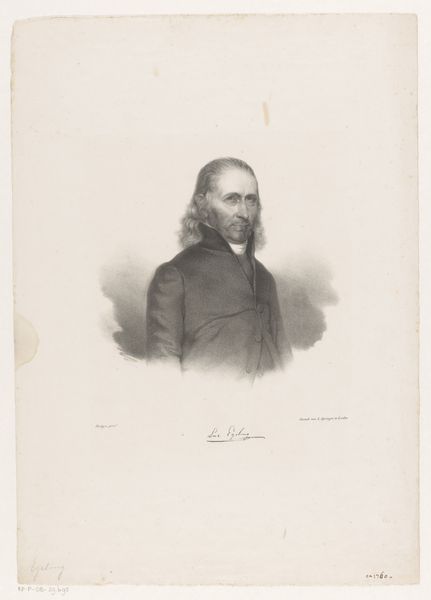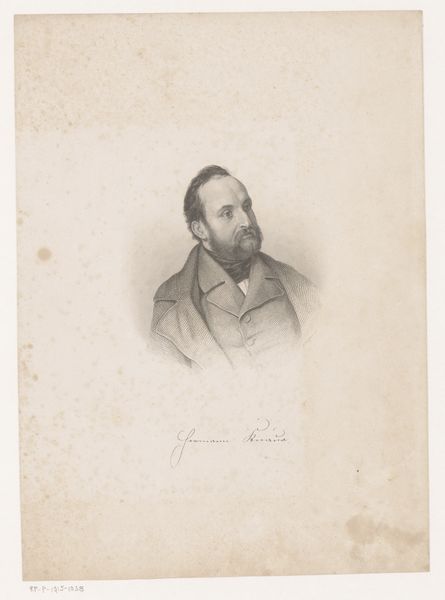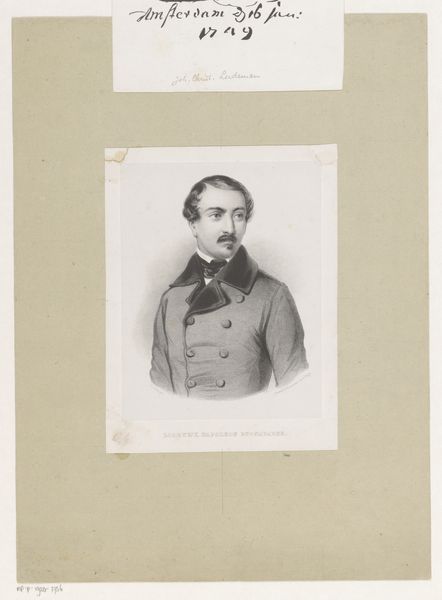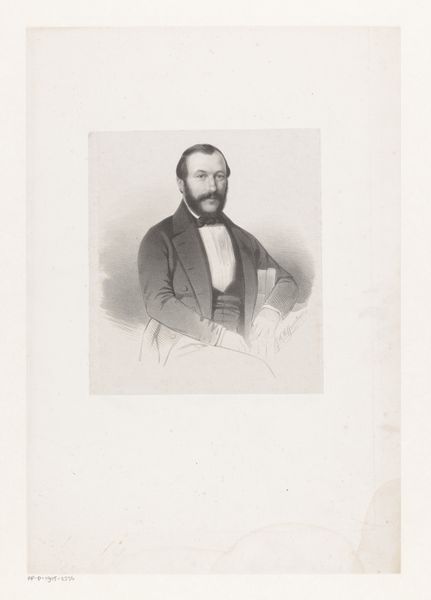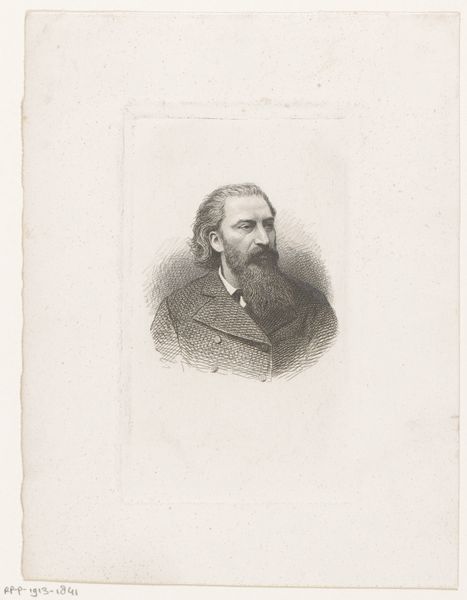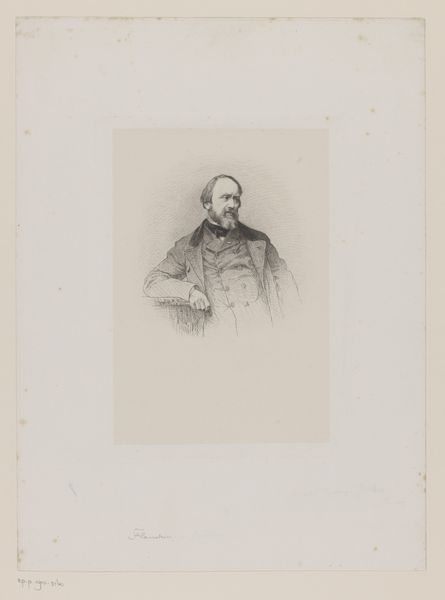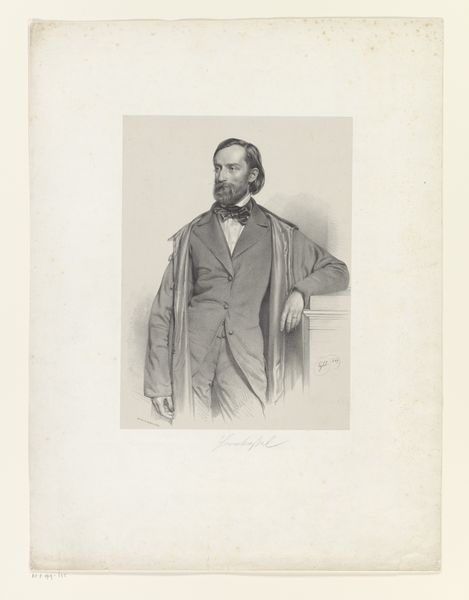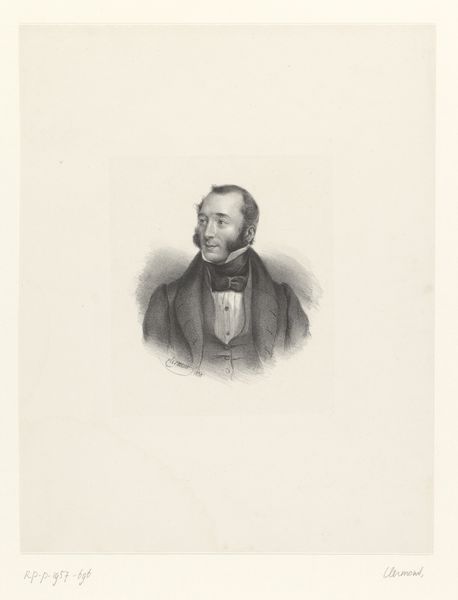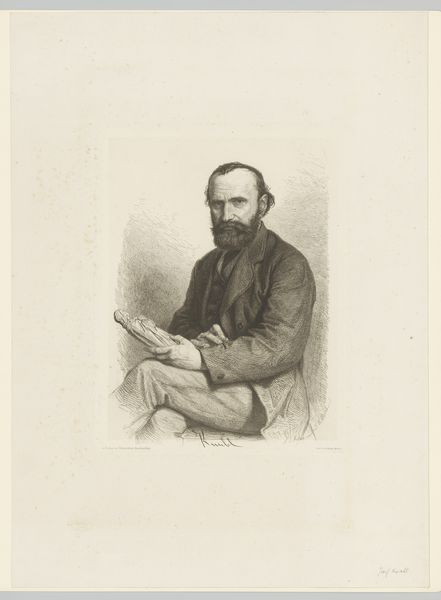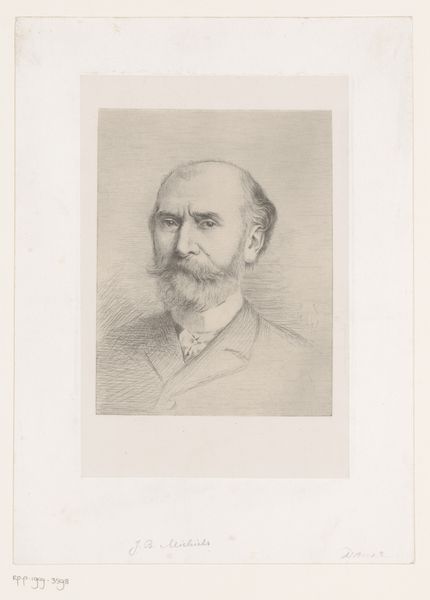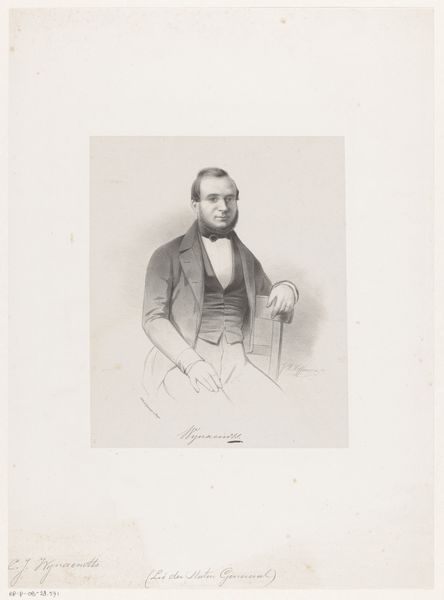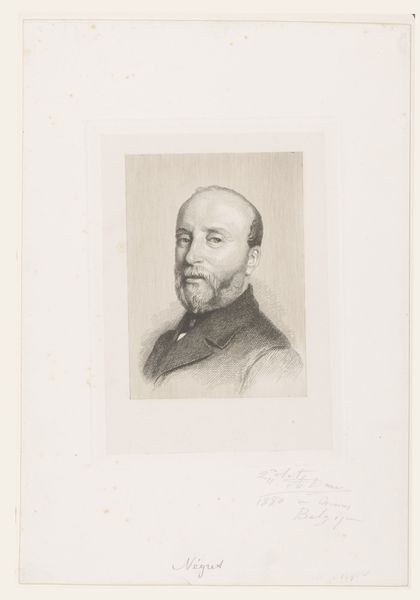
print, engraving
#
portrait
# print
#
old engraving style
#
history-painting
#
engraving
#
realism
Dimensions: height 250 mm, width 163 mm
Copyright: Rijks Museum: Open Domain
Here is the portrait of Gustav Struve, etched by Johann Georg Nordheim. Observe how the sitter’s gaze meets ours with startling directness. It’s not merely a physical likeness, but a capturing of inner character. The direct gaze, prevalent in portraiture across centuries, carries a heavy symbolic weight. Think back to ancient Roman portrait busts, the eyes—often inlaid with glass or stone—staring out, asserting authority and presence. In early Christian art, the direct gaze conveys spiritual intensity, connecting the viewer to the divine. The gaze has evolved. It is charged with psychological significance. The eyes, after all, are the windows to the soul, are they not? Our collective memory imbues the gaze with power. Consider how such a motif elicits a deep, subconscious response. The power of the gaze is non-linear, cyclical, resurfacing through history, evolving, and laden with new meaning.
Comments
No comments
Be the first to comment and join the conversation on the ultimate creative platform.

